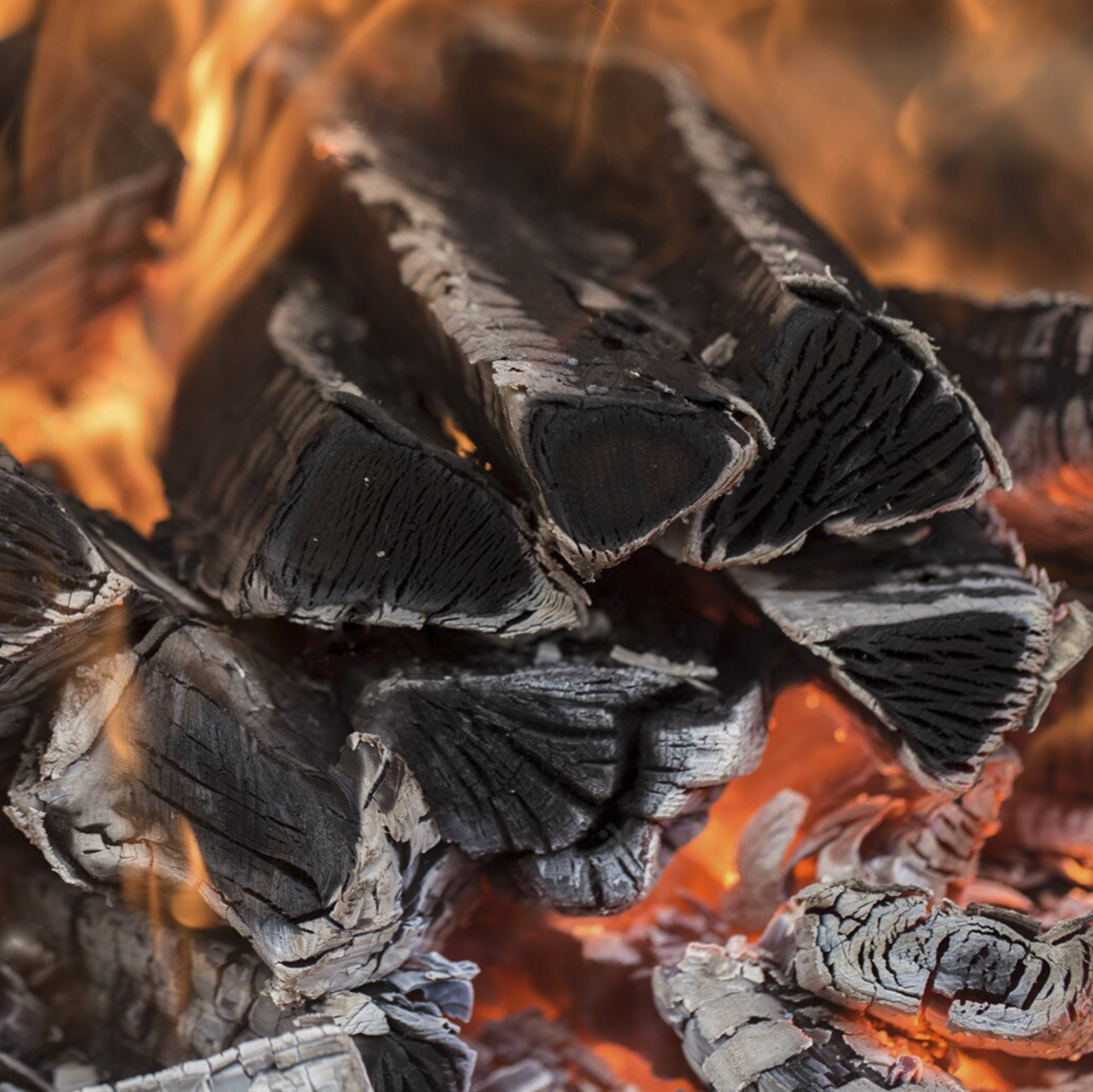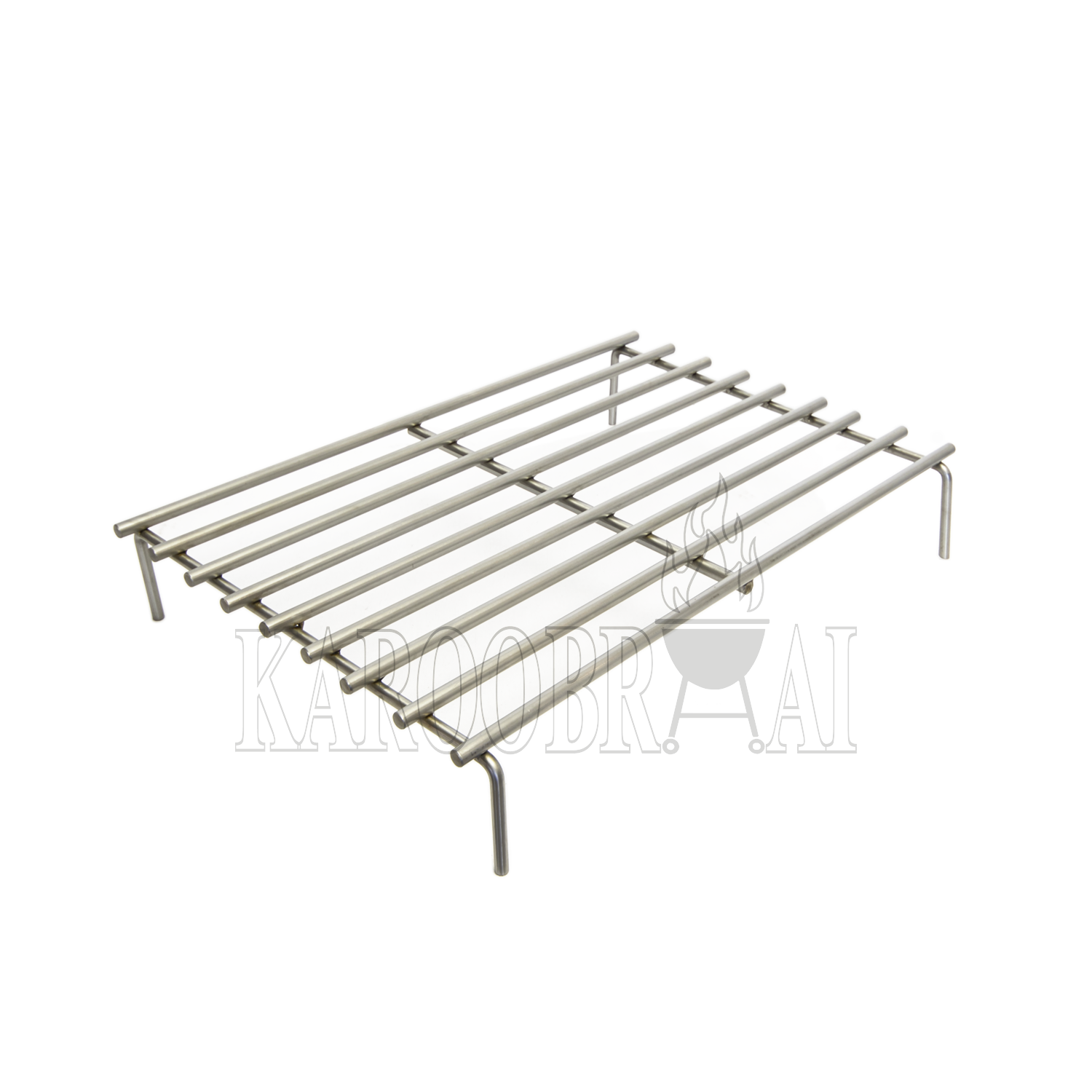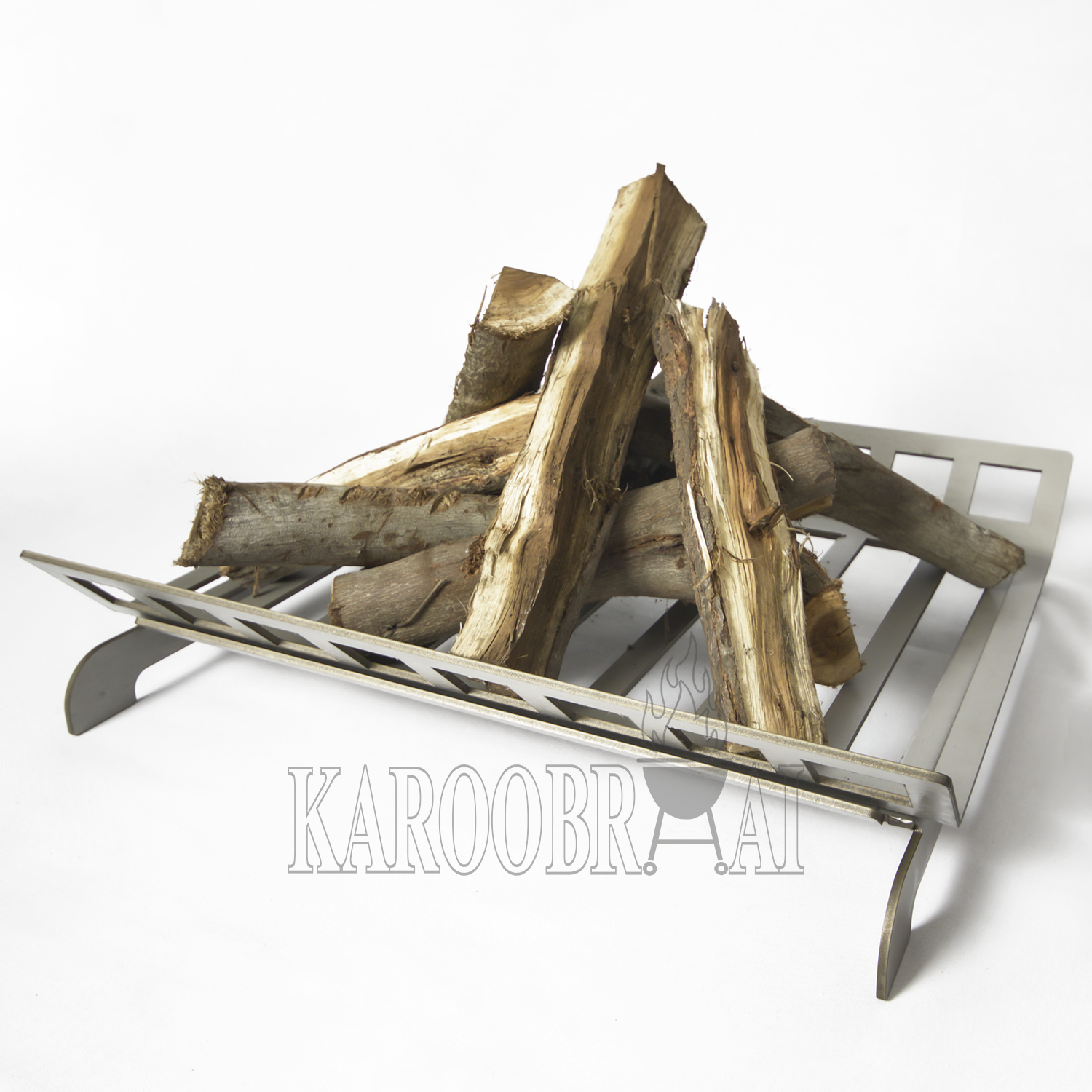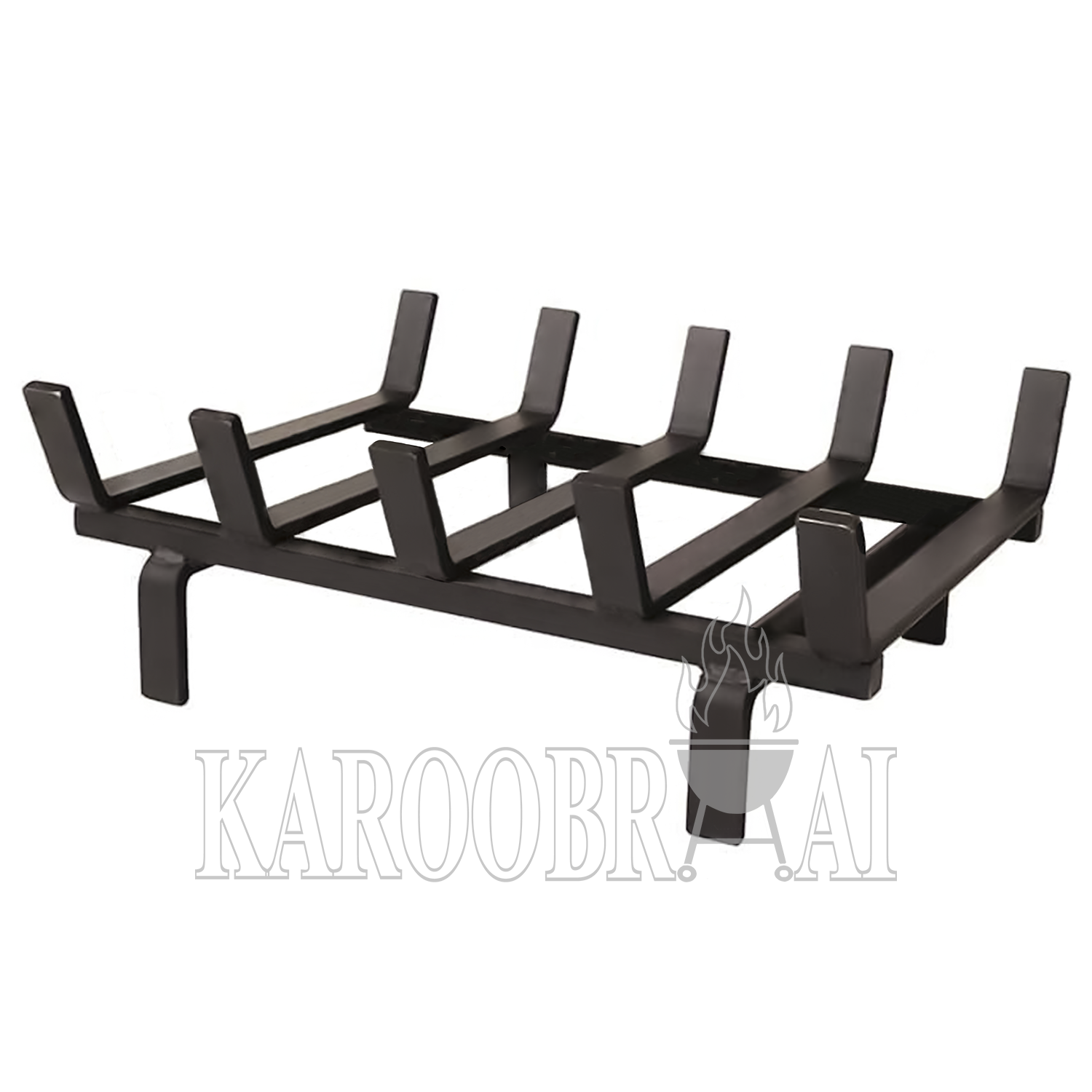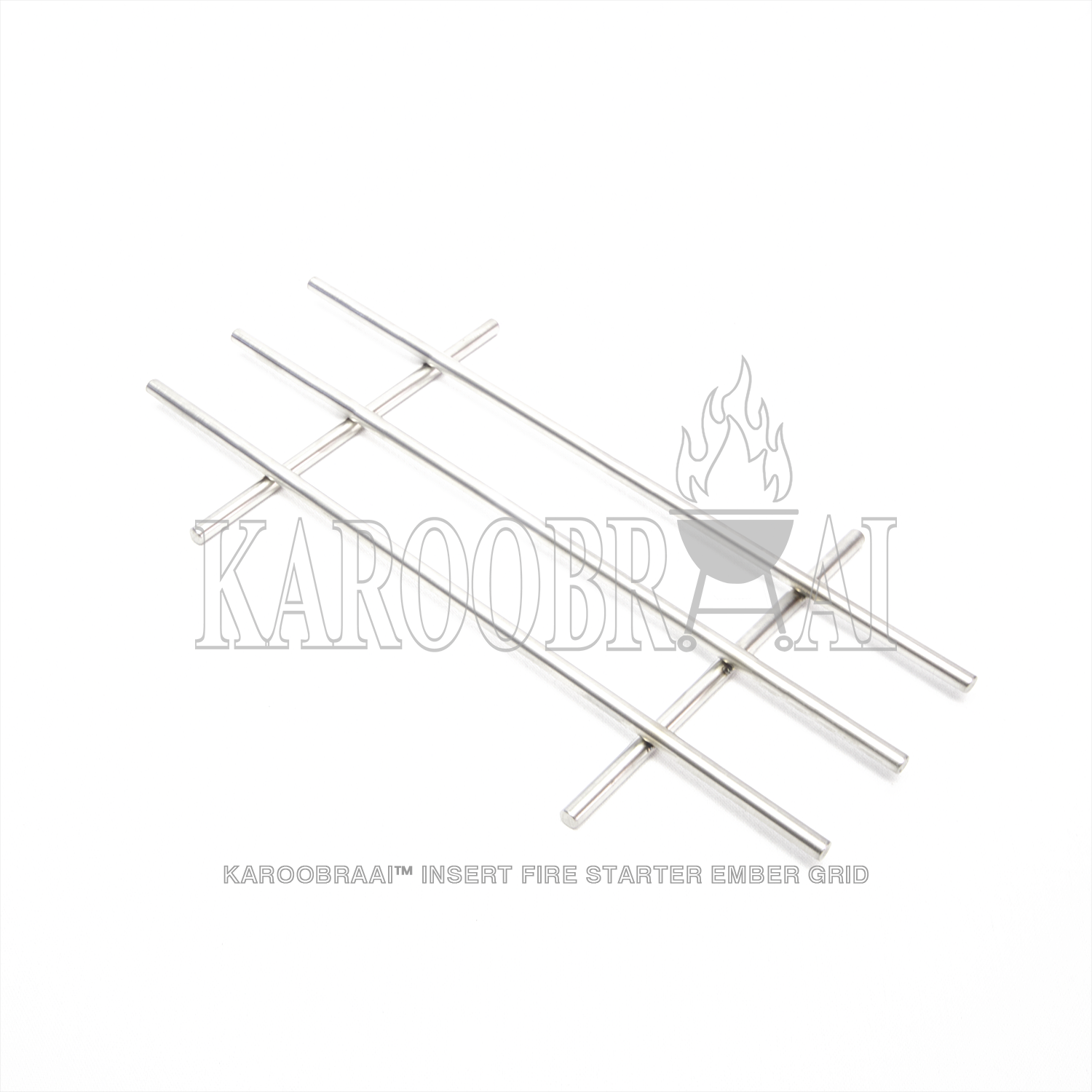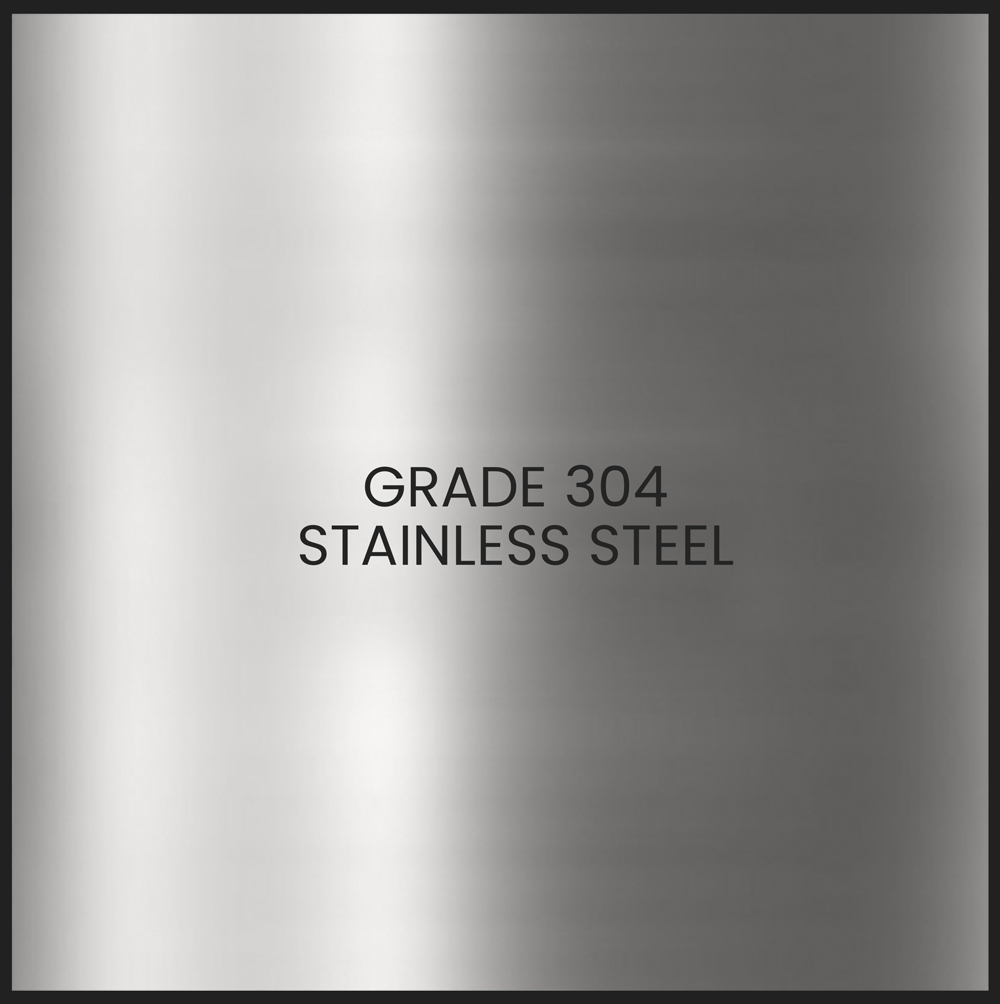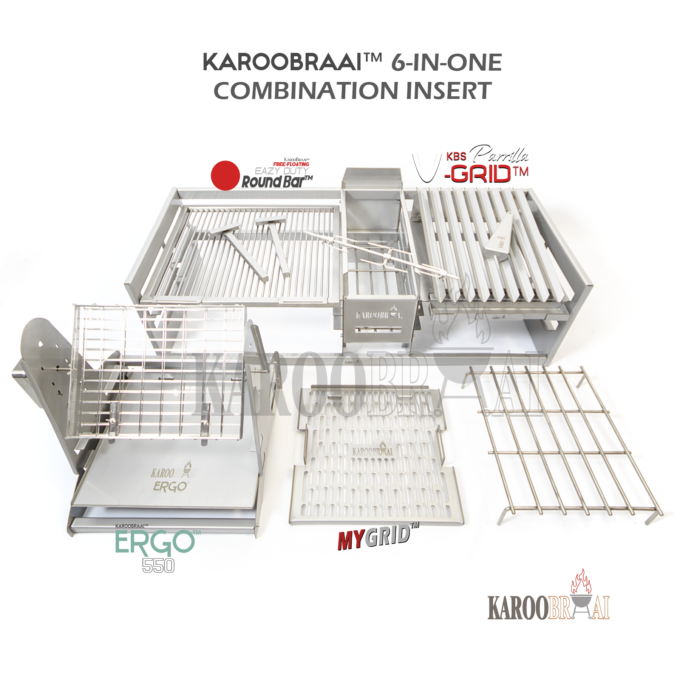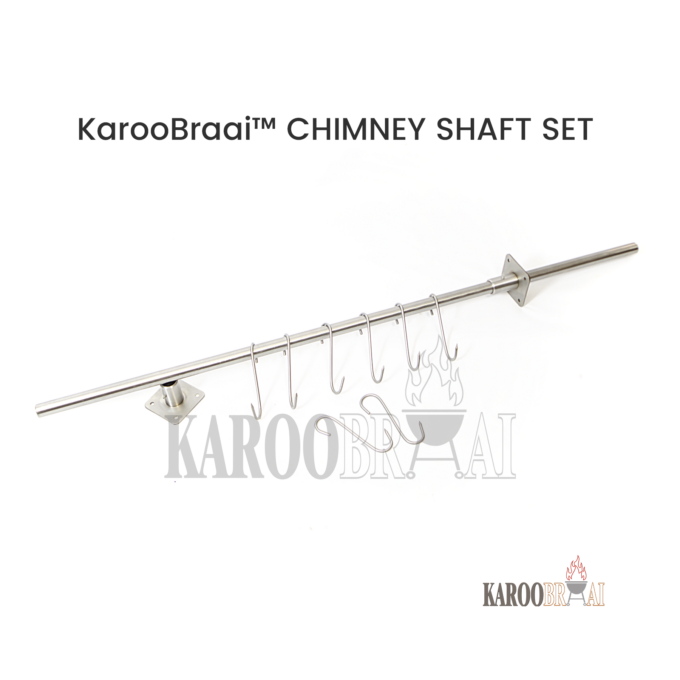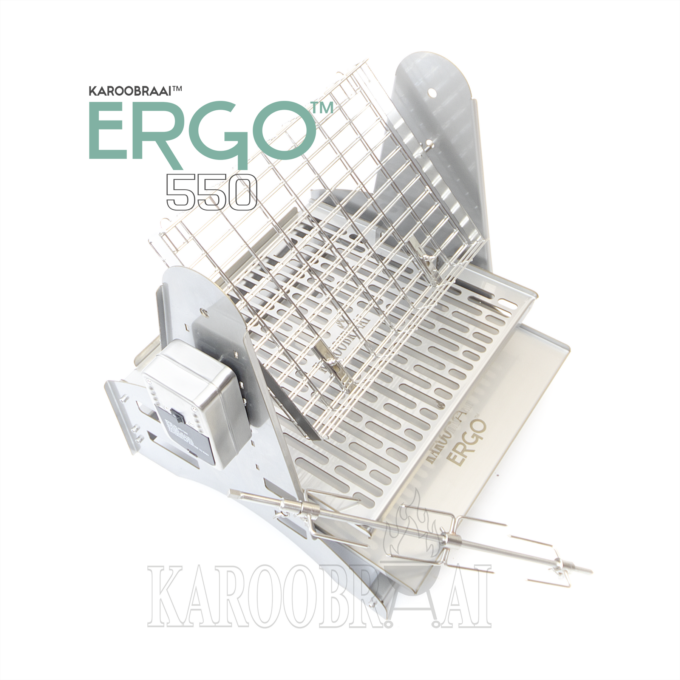AVOID DISAPPOINTMENT – UNDERSTAND HOW IT WORKS WITH 𝔽𝕀ℝ𝔼 𝔸ℕ𝔻 𝕊𝕋𝔼𝔼𝕃
You would not drive your strong 4 x 4 into a tree to find out if it can withstand irregular forces, would you?
Understand How Warping in Steel Takes Place and Learn How to Prevent it.
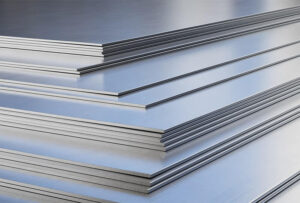
CONSIDER THIS:
Your stainless steel braai ember tray (ash pan) might be warping due to extreme temperature changes,
uneven heating, or the type of stainless steel used, especially if it’s an austenitic grade like 304 or 316.
Here’s a more detailed explanation:
Austenitic stainless steel (e.g., 304 and 316):
Can operate at temperatures up to about 870°C (1600°F), suitable for high-temperature applications.
Ferritic stainless steel (e.g., 430):
Typically works below 815°C (1500°F).
Martensitic stainless steel (e.g., 410):
Maximum working temperature is about 600°C (1112°F).
BUT, it can do so in certain given conditions…
Austenitic stainless steel has 30% less thermal conductivity than carbon steel
and 30% greater thermal expansion than carbon steel.
Since stainless steel has low thermal conductivity, localized heating can cause uneven
expansion and contraction, leading to distortion.
At what temperature does stainless steel warp and WHY?
Warping becomes more likely as temperatures climb into the 500-700°C range,
especially for thinner sheet metal, or with uneven heating.
Warping as you may know, is caused by uneven expansion/contraction of the material – any material.
If you build a fire in the middle of your ash pan, you’re producing a lot of heat and it’s being directed at the center of your pan!
As the center of the pan heats it will expand, the edges of the pan are not getting as much heat and are
NOT expanding to the same degree, so they are squeezing the center of the pan. That’s why it’s buckling.
If your equipment warps, the problem is not the thickness of the plate or your chosen supplier for your favorite braai –
It is the non-uniformity of the heat input.
Here are some factors to consider BEFORE you select to make your fire in your ash pan:
1. MATERIAL THICKNESS
Choose a thicker material when possible for your ash pan – even though thinner materials are available.
It has increased resistance to warping due to its greater thermal mass and rigidity.
This means it can better withstand the stresses of heating and cooling.
However, using thicker material may help mitigate warping, but it does not guarantee that warping will not occur.
It is still susceptible under certain conditions.
Thermal expansion is proportionate to temperature so you may get the same stresses regardless of thickness.
2. THERMAL EXPANSION (THERMAL SHOCK) & EXTREME TEMPERATURE CHANGES
Stainless steel expands when heated, and if there are significant temperature gradients across the ash pan,
it can lead to warping.
Avoiding rapid temperature changes can help reduce this risk.
Rapid heating and cooling, especially if one side heats up faster than the other, causing the metal
to expand and contract unevenly, will cause the tray to warp.
Rapid cooling of an ash pan can cause warping due to uneven contraction, especially if cold water is used to clean it.
The fact is that this also happens when using kitchen pans incorrectly.
Taking care to heat your equipment gradually where possible and evenly, can help minimize the risk of warping.
3. USE OF YOUR ASH PAN
If the ash pan /ember tray is used for something other than its intended purpose
(e.g. using it as a fire pit), it can be more prone to warping.
4. HEATING METHOD
(Ash Pans, Braai Pans, Steak Plates, Braai Grids)
If the heat source is uneven or if the equipment is heated too quickly, it may still warp.
Gradual heating and using a heat diffuser can help distribute heat more evenly across the surface.
Ash pans may last longer without warping by using your fire starter for its intended use.
Pans and steak plates may last longer (braai, gas or kitchen) if even heat is distributed under the utensil.
Braai grids may last longer when they are not used over extreme heat unnecessarily.
5. SIZE OF PANS, PLATES & GRIDS
Larger pans, plates and grids are more prone to warping than smaller ones due to the greater area subject to thermal expansion.
6. QUALITY OF MATERIAL
The quality and grade of stainless steel can also affect its resistance to warping.
Higher-quality stainless steel may perform better under heat.
7. CLEANING OF GRIDS & PANS
Grids that have food & grease build-up over a long period of time will not
allow the heat to escape efficiently through the cut-outs /slits /gaps in the grid.
This creates an excessive build-up of heat causing the grid to warp.
However, this does not suggest one should ‘burn-off‘ last week’s grid to clean it over an open fire or very hot embers.
(If the braai fuel temperature is not almost the same as what you would use to braai your protein,
your grid or pan simply should not be over your fire /embers)
Braai pans and steak plates should NEVER be ‘cooled down’ with cold water – you WILL warp your braai pan!
Wash /soak with warm to hot water and apply a coat of olive oil after use.
Normal fire grates eventually disintegrate resulting from high temperature reached in open fires!
Strength loss (loss of temper) for steel is generally accepted to begin at about 300°C and increases rapidly after 400°C.
At 427°C, steel retains approximately 60 percent of its yield strength!
At 566°C, carbon steel only retains approximately 50 percent of its yield strength and 45% of its stiffness!
Stainless steel and its related superalloys are exceptional materials known for their resistance to rust,
particularly when operating at room temperature or below.
However, their resistance to oxidation diminishes when exposed to heat,
although they still exhibit impressive resistance.
STAINLESS STEEL COLOUR and TEMPERATURE:
The discoloration of stainless steel and their related alloys serves as
a valuable diagnostic tool in identifying and resolving heating issues,
providing crucial insights for maintaining optimal performance and efficiency in heating applications.
At around 260°C, a shiny stainless steel surface will retain some shine, but beyond this point, the colors become matt.
Different areas of discoloration on e.g. ash pans indicate variations in temperature,
which may result from making fire directly in the pan, uneven distribution of embers in the pan
(not using the whole pan or using one side of the pan only), or irregularities in the application setup.
Unfortunately, cyclic heating, characterized by repeated on-off cycles, can crack the protective oxide layer due
to thermal expansion and contraction, exposing the underlying surface to additional oxidation.
This emphasizes the importance of monitoring color changes in heaters to identify potential issues.
Understanding these color changes can help identify and address potential issues before they escalate.
Stainless Steel Color – Temperature
Pale Yellow 280ºC
Straw Yellow 340ºC
Dark Yellow 370ºC
Brown 400ºC
Purple Brown 425ºC
Dark Purple 450ºC
Blue 535ºC
Dark Blue 595ºC
FACTS:
1.
The maximum temperature that a wood-burning fire can reach depends on
several factors, including the type of wood, airflow, and combustion conditions.
Under optimal conditions, such as sufficient airflow and dry wood,
temperatures in a wood-burning fire can typically range from 1100°C to 1200°C!
2.
* * * Grade 304 stainless steel has good resistance to oxidation in:
intermittent service up to 870°C,
and in continuous service to 925°C.
3.
* * * Grade 3CR12 stainless steel exhibit scaling resistance between 600 and 750°C in the presence of air,
and between 450 and 600°C under stress environments.
The material tends to become fragile upon prolonged exposure to temperatures between 450 and 550°C
Ash Pans are for embers and ash – it is NOT meant to build a fire in!
Should you wish to build a fire in your ash pan, make sure to use the correct ember grid.
Should you wish to purchase a braai without a side mounted fire starter, add an ember grid or fire starter cradle to your order.
Alternatively, use a handheld model ember maker.
However, you still need to consider that heat distribution happens effectively over any ash pan you may use.
Ember Grids and Fire Starter Grids (grates) have advantages – and are MEANT to build a fire on!
If you are the type not to be kept busy with ember grid and ash pan issues, build that bonfire on suitable thickness clay fire bricks.
Change either the ember grid or the fuel used to make a fire while still suiting your preferences, but make sure they work together.
– KarooBraai™ Ember Grids are manufactured from 10mm thick grade 304 stainless steel
(View HERE: KarooBraai™ Stainless Steel Roundbar Ember Grid – Custom Pricing on Request – KarooBraai™)
– KarooBraai™ Fire Starter Cradles (grates) made from 4.5mm thick grade 3CR12 stainless
steel are suitable in some instances to prepare your embers –
large aeration cutouts allow air to be drawn into the base, front and rear of the grate
(View HERE: KarooBraai™ Stainless Steel Fire Starter Grate – Custom Pricing on Request – KarooBraai™)
Consider the Benefits of a Suitable Ember Grid:
Note there really isn’t an ember grid that will be suitable for wood, briquettes and charcoal, as all these come in different sizes.
– Ember Grids do prolong the lifespan of your ash pan as air from beneath helps to push heat upward and away from the ash pan
– Fire gets ventilated from underneath which greatly helps to get to embers stage
– The worst contact heat from a large fire is not in contact with the ashpan for prolonged periods,
as only the embers will fall through the ember grid onto the ash pan
– 10mm round bar in grade 304 stainless steel will probably outlast the total braai
– Ember Grids allow for the ash pan to warm up gradually (slower)
– Ready-to-braai embers /coals can more easily be distributed evenly over the ash pan
surface to help eliminate uneven heat distribution.
– Consider a layer of clay fire brick in your ash pan if you really want to make sure.
*Contact us if you are unsure of your braai setup requirements.
*Contact us about courier costs for the KarooBraai™ Ash Pan to your area –
We ship to your door – nationally!

